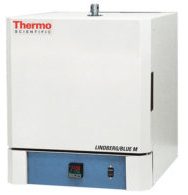
The FDA announced it will allow the use of dry heat to lower the bioburden on masks used by healthcare workers treating COVID-19 patients.
While not authorizing equipment made by a particular company, guidance released said healthcare providers may use dry heat to reprocess NIOSH-approved filtering facepiece respirators, such as N95s, to enable their reuse by one person. Specifically, the agency recommended that:
The system can ensure respirator exposure to consistent temperatures of 70°C (158°F) for 60 minutes or 75 °C (167°F) for 30 minutes to guarantee sufficient bioburden reduction while maintaining respirator integrity.
Chamber temperature can be monitored closely and recorded throughout the cycle to confirm accurate and even distribution of heat.
The system has highly controlled convective heat transfer (e.g., laboratory oven, industrial convection oven) to avoid the risk of localized over-temperature.
The system is not a household appliance (e.g., home ovens, pressure cookers, multicookers) due to the lack of accuracy and precision in temperature control and the risks of cross-contamination from mixed use.
A study published online in April 2020 in the Journal of Hospital Infection showed that dry heat at both 60°C and 70°C for one hour could successfully kill six species of respiratory bacteria and one fungi species, and inactivate the H1N1 indicator virus. After being heated at 70°C for one, two, and three hours, the N95 respirators and surgical face masks showed no changes in their shape and components, the authors noted. The filtering efficiency of bacterial aerosol for N95 respirators was 98 percent, 98 percent and 97 percent after being heated for one, two, and three hours, respectively — greater than the 95 percent efficiency required and similar to the value before being heated (99 percent). The filtering efficiency for surgical face masks was 97 percent, 97 percent, and 96 percent for one, two and three hours of heating, respectively, all of which were also similar to the value before being heated (97 percent), the study found.
The use of dry heat to reduce bioburden is only intended to supplement existing single-user reuse recommendations from the Centers for Disease Control and Prevention (CDC), such as storing a used N95 mask in a breathable paper bag for a minimum of five days between each use, according to the FDA.
Bioburden reduction systems can play an important role in the ongoing efforts to help address shortages of filtering facepiece respirators, said Dr. Binita Ashar, director of the Division of Surgical Devices in FDA’s Center for Devices and Radiological Health.
“There exists sufficient evidence demonstrating that there is a reduction of microbial load on certain respirators when exposed to certain dry heat parameters,” Ashar said in a news release.
MORE INFO www.medicaldesignandoutsourcing.com
























